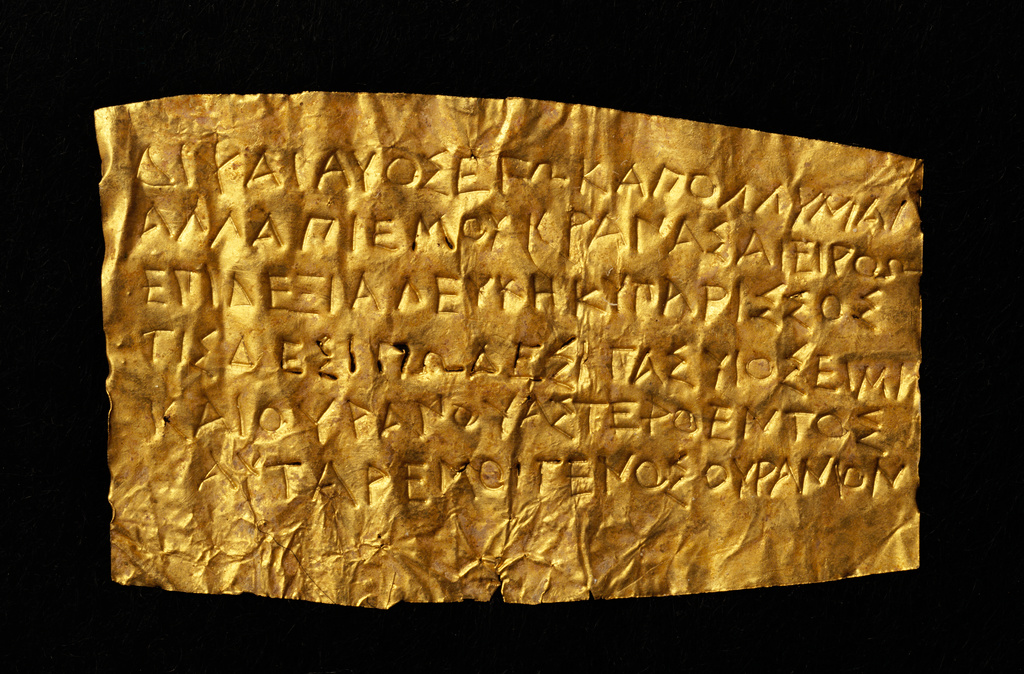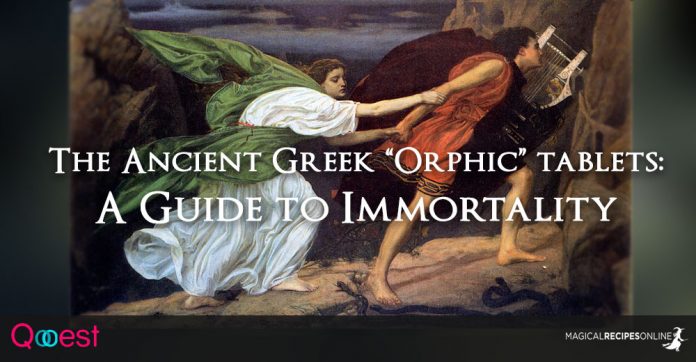When we speak about Ancient Greece we usually associate this civilization with principles such as philosophy, democracy and rationality. We barely think that the Greek culture had a more mystical and spiritual dimension while we readily recognize spirituality in other ancient worlds, from Celts to Indians.
Well, this is a reasonable opinion. Most references to Ancient Greece are about the birth of systematic reasoning, the argumentation of Socrates, the works on logic by Aristoteles and the architectural magnificence of the polytheistic temples.
A reasonable opinion but a wrong one: Ancient Greece gave birth to one of the most liberating aesthetical experiences, namely theatre and especially tragedy! We are aware of the Eleusinian Mysteries and other festivities with initiations. We know about magic and the oracles. And along with the “official” Pantheon, there were numerous “occult” deities such as Pan, Demeter, Hekate, Persephone or the enigmatic chtonic gods Kawir.
The spiritual and less “logical” aspect of the Ancient Greek culture has been discussed in the philological work of Eric R. Dodds “The Greeks and the Irrational”. The problem we encounter however is the scarcity of sources and the secrecy of the rituals.
You see, the Greeks provided us with plenty of philosophical, poetic and historical works but they were parsimonious when it came to initiations. Which means that they took the whole thing quite seriously. However, there have been spiritual movements that left behind traces of magical and spiritual practices. Some rare but wonderful examples are the so called “Orphic Tablets”.
The “Orphic” tablets: instructions on the way to the Otherworld
Archaeologists have excavated a number of engraved golden foils from ancient graves. These carry inscriptions that give some guidance to the deceased person in order that she or he finds their way to divine and immortal life.
There are about 30 to 40 golden tablets found in the Greek regions of Macedonia, Thessaly and Crete as well as in Southern Italy where there were several Greek colonies. The Latin designation Orphicae Lamellae is largely used in Archaeology. They are also called Totenpass (plural: Totenpässe), a German term that can be translated as “passport for the dead”. The Ancient Greek “Orphic” tablets are undoubtedly the best example.
The foils are of very small dimension (they vary between 8 and 4 cm. wide and 3 to 1 cm long), therefore it is rather cumbersome to read the inscriptions written on them. But once read the texts on them revealed a fascinating secret: the tablets are rather rare and seem to have belonged to a close group of persons that were initiated to an esoteric cult. This cult has probably been Orphism and that is why the tablets are called like that.
As we read in Bernabé and Jiménez San Cristóbal “Are the “Orphic” gold leaves Orphic?” (ed. by Radcliffe 2004: 68ff):
“For several reasons, the inscriptions on the gold tablets carry great importance for Greek religion. These inscriptions are among the few first-hand testimonials telling us about the religious experiences and expectations of an ancient cult of mysteries. The testimonials were not meant for a future reader, but were put into the graves of initiated mystai as secret memoranda. An absolute minimum of knowledge, without which the road to Elysium could not be found, was inscribed on these pieces of gold foil.
This makes them esoteric inscriptions, in other words, different from the exoteric grave inscriptions aimed at the passing visitor (although they show revealing similarities). Those inscriptions meant for the public, as they often emphasize themselves, also strive to impart basic wisdoms about life and death. In that context, some of them contain hints of the initiation into the mysteries, but without giving away the secret rituals.”
The riddle of Orphism
But what was Orphism exactly? As the relevant Wikipedia article puts it, Orphism was a set of beliefs and religious practices ascribed to the mythical musician, poet and prophet Orpheus. He originated from the region of Thrace so there was a “barbaric” touch in the roots of his cult.
The ancient sources narrated that Orpheus descended to Hades, the Underworld of the Greeks in order to bring back his beloved wife Eurydice. This was a deed possible only for semi-divine men, such as Hercules or Odysseus, since it has been impossible for mortals to escape the realm of Death. Orpheus dies when Thracian priestesses in ecstasy tore his body to shreds.
Orphism was then a religious movement based on the mythological legend of Orpheus. Some refer to Orphism as a religion, but this would suggest that Orphism was not part of the Olympic Greek religion. To what extent Orphism was different from the mainstream religion is a historical conundrum that we cannot answer. It is however true to say that Orphism was intertwined with the cult of Bacchus or Dionysus (the God of joy and wine) and the Pythagorean philosophy. It laid great importance on the immortality of the soul and there were elements of reincarnation and the eventual release from the “grievous circle” of existence.
This reminds of the Sanskrit concept of Saṃsāra. But since there are no detailed religious texts with a concrete instruction, we only rely to indirect evidence. There is an Orphic theogony, a story of world’s creation, a collection of hymns and the Orphic tablets we are discussing about here. You can read a beautiful hymn dedicated to the fifth Element of æther (or Spirit) below, retrieved from this site. It seems appropriate to be recited in front of a hearth:
TO ÆTHER (Spirit)
The Fumigation from Saffron.
O Ever untam’d Æther, who reign’st on high in Jove’s [Zeus’] dominions ruler of the sky;
The glorious sun with dazzling lustre bright, and moon and stars from thee derive their light;
All taming pow’r, ætherial shining fire, whose vivid blasts the heat of life inspire:
The world’s best element, light-bearing pow’r, with starry radiance shining, splendid flow’r,
O hear my suppliant pray’r, and may thy frame be ever innocent, serene, and tame.
“I am a son of Earth and starry Sky”
As afore-mentioned, the “Orphic” tablets are then unique because they are a window to an otherwise unapproachable mystic circle. It is interesting that they were found in regions were Orphism was strong. Although the archaeologists have discovered thousand of ancient graves, we only have but a few tablet samples. These were created at a time spanning from 400BC to 300AC. This is suggestive of the fact that only a small group of initiated persons followed this funeral practice and they may have belonged to personalities that reached a higher rank within Orphism.
It is also fascinating to see how powerful the poetic expression of these texts is. Read for example the one below. It is the most ancient sample we have and stems from the Ancient Greek colony of Hipponion in southern Italy. It was excavated from the cist- grave of a woman, around 400 BCE and it is now in the Museo Archeologico Statale di Vibo Valentia. The rectangular gold tablet, folded several times, was found lying on the upper chest of the skeleton and was perhaps attached to its neck by a tiny string.
Here is the text:
This is the work of Memory, when you are about to die
down to the well- built house of Hades. There is a spring at the right side,
and standing by it a white cypress.
Descending to it, the souls of the dead refresh themselves.
Do not even go near this spring!
Ahead you will find from the Lake of Memory,
cold water pouring forth; there are guards before it.
They will ask you, with astute wisdom,
what you are seeking in the darkness of murky Hades.
Say, “I am a son of Earth and starry Sky,
I (masculine) am parched with thirst and am dying; but quickly grant me
cold water from the Lake of Memory to drink.”
And they will announce you to the Chthonian King,
they will in turn grant you to drink from the Lake of Memory.
And you, too, having drunk, will go along the sacred road on which other glorious initiates and bacchoi travel.
(Translation in Graf & Johnston 2007: pg. 5)
The Getty Museum Orphic Tablet
One of the best-preserved tablets lies in the Getty Museum in Los Angeles. It pertains to an excellent example of a 4th-century BC Orphic prayer sheet from Thessaly. You can admire it in the photo below:

Phaethon
References and further Bibliography on Orphism and Orphic Tablets:
Bernabé, Alberto, and Ana Isabel Jiménez San Cristóbal. “Instructions for the Netherworld: The Orphic Gold Tablets”. Boston: Brill, 2008.
Dodds, Eric R. The Greeks and the Irrational. University of California. 1951.
Edmonds, Radcliffe. Myths of the Underworld Journey: Plato, Aristophanes, and the ‘Orphic’ Gold Tablets. New York: Cambridge University Press, 2004.
Graf, Fritz, and Sarah Iles Johnston. Ritual Texts for the Afterlife: Orpheus and the Bacchic Gold Tablets. New York: Routledge, 2007.

